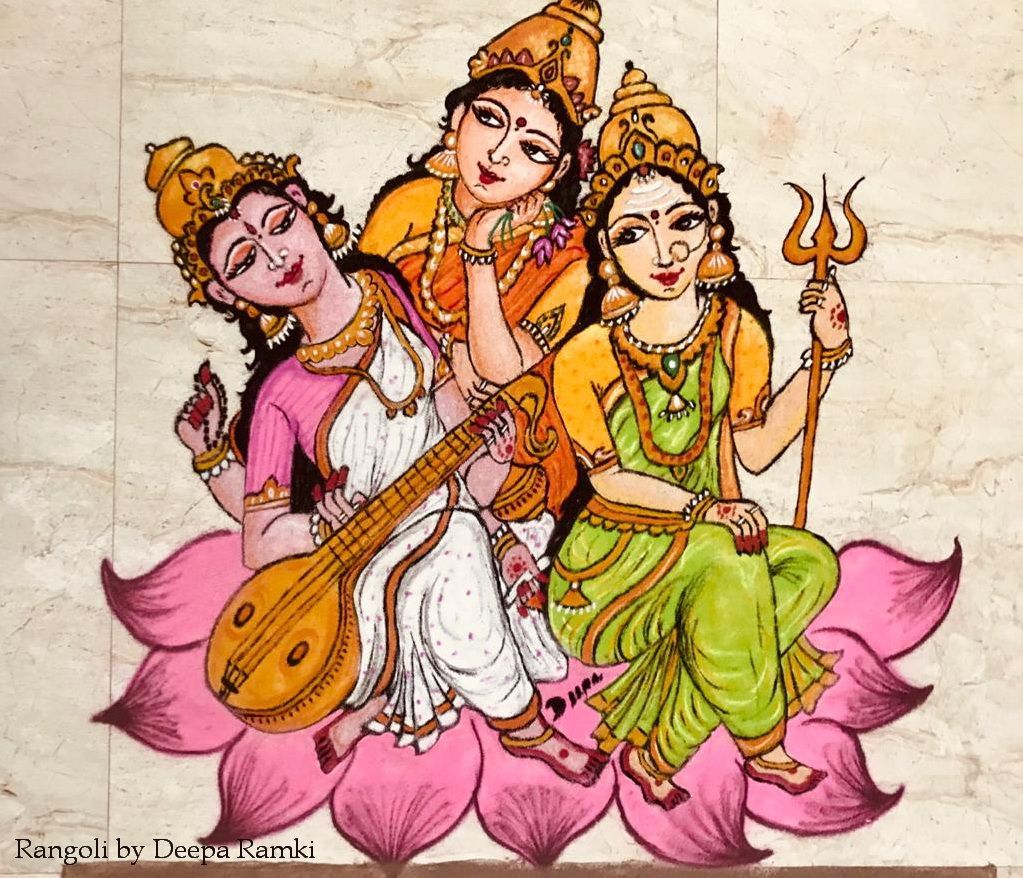Navaratri kolam to celebrate the Goddess
Navaratri, literally "Nine Nights", zealously celebrates the manifestations of the female creative force called Shakti Devi. This festival, which goes by different names in various parts of India, lasts for nine nights and ten days.

